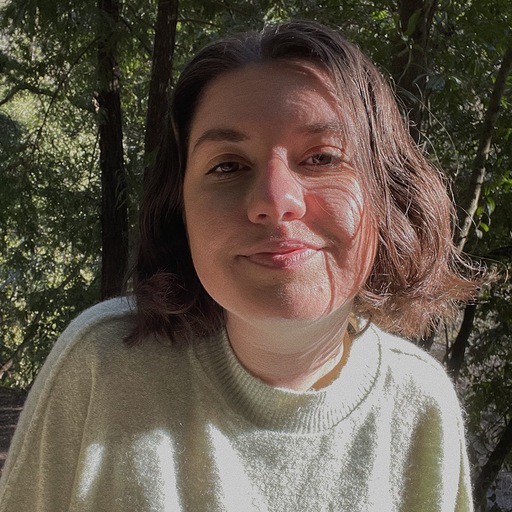Pixar Developed Technology To Bring More Diversity To The Background Of Every Turning Red Scene
The animation studio is making moves for representation.
In recent years, Disney as a whole has made a larger effort to include more representation in its films, with animation studio Pixar being part of this. Coming up next month is the studio’s first Asian-led story, Turning Red. The Disney+ exclusive release will tell the story of a middle-schooler who suddenly transforms into a giant red panda amidst navigating the awkwardness that comes with being a young teenager. Not only does the animated movie feature representation front and center, the studio is making a larger effort to bring diversity in just about every aspect of the production.
CinemaBlend had the chance to check out the first 20 minutes of Turning Red ahead of the movie coming to those with a Disney+ subscription next month. The film's early scenes establish a world full of pastels and ‘90s nostalgia as it follows Mei’s coming-of-age story growing up in Toronto, Canada.
Right away, I noticed the rich cast of background characters that truly captures the melting pot of the Ontario capital. Turning Red’s director Domee Shi spoke about what goes on behind the scenes to bring diversity in the film’s animation to life. In her words:
Diversity in the background [of scenes] is hard to do because you literally have to build different hair, different body shapes and different faces, but they were able to create such an amazing, diverse cast of background characters with the limited time that we had and it really feels authentic. When you watch it, it feels very much like Toronto which is awesome. The [team} would come to us and give us suggestions on representation, because even though I’m an Asian Canadian woman, I too will have blindspots and things I don’t normally think about. They’ll come in with opportunities like ‘What if we had a person in a wheelchair in this shot’ or make sure that in our sets we have ramps going into the temple, which is like ‘Oh my gosh, duh! Of course.’ But I never would have thought about this stuff.
As Domee Shi described during our interview, there’s a lot of thought that goes into every frame of a Pixar movie these days. If you look closely, you’ll see an additional effort from the animation studio to represent the rich array of cultures and people living in Toronto. The director, who previously helmed the Academy-Award winning short Bao, continued:
For example, in one of the trailers, we feature a background character with an Insulin pump and that was from the crowds team and it was huge. People really responded well to that. It’s so awesome that people can see themselves.
Not everyone would certainly think right away to pencil in a student wearing an Insulin pump in a Pixar film, but because the studio is spending more time on diversity, its team thought to add it in. You can see a character wearing one in this screenshot from the Turning Red trailer:

Insulin pumps are small computerized devices that people with diabetes often wear on their arms. It allows them to receive insulin through a small tube that goes under their skin steadily throughout the day and night. For someone who uses one on a regular basis, to see a character in animation wearing an Insulin pump could mean they are seeing themselves being represented on screen and contributing to it being normalized to a general audience.
Turning Red’s producer Lindsey Collins also spoke to us about how Pixar is ensuring there is more representation in their movies, even in the background. In her words:
Your Daily Blend of Entertainment News
We also had a great new technology that got introduced on this film where we were even able to in any frame of a scene do an analysis of what the representation was on the screen. You can build all these characters, but once the camera starts moving, even just sometimes by mistake diversity gets lost because of how the camera is focused or what happens to be on screen for that scene even if you have a bunch of characters available. They do these great analyses for us all the time.
While shooting in live-action can allow for an honest population of people to be represented, everything in animation must be created from scratch. For Turning Red, Pixar has created a system to make sure that there is more diversity in the background of shots in a way that attempts to override the inherent bias of the team working on the project. Lindsey Collins continued:
That used to be very subjective, where we’d all just look at it and go ‘how does it look?’ and now we have tools where we can go in and see if all the diversity we’ve created is actually making it on the screen the way we were intending and if not we can go in and make sure we’re adjusting.
It's pretty amazing the ways in which Pixar is finding ways to be more inclusive in its animated films. Check out more of CinemaBlend’s interview with Domee Shi and Lindsey Collins and learn more about Turning Red ahead of the movie’s release on March 11.

Sarah El-Mahmoud has been with CinemaBlend since 2018 after graduating from Cal State Fullerton with a degree in Journalism. In college, she was the Managing Editor of the award-winning college paper, The Daily Titan, where she specialized in writing/editing long-form features, profiles and arts & entertainment coverage, including her first run-in with movie reporting, with a phone interview with Guillermo del Toro for Best Picture winner, The Shape of Water. Now she's into covering YA television and movies, and plenty of horror. Word webslinger. All her writing should be read in Sarah Connor’s Terminator 2 voice over.
